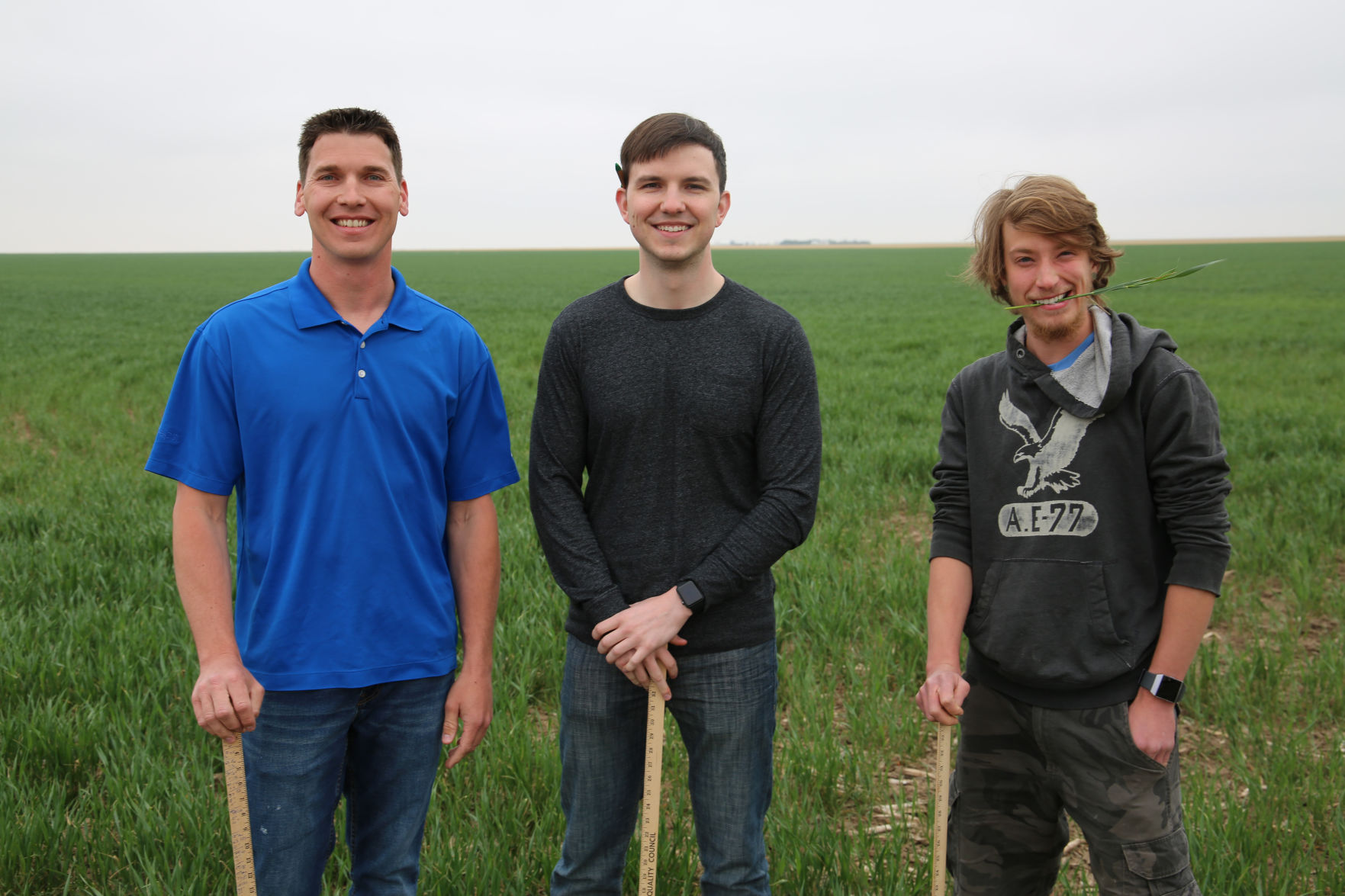With the condition of the Kansas wheat crop rated mostly poor to very poor, the 61st annual hard red winter wheat tour, conducted by the Wheat Quality Council, projected the 2018 crop will average 37 bushels per acre.
If realized, that would be 11.6 bushels per acre below what the tour projected in 2017 and the lowest estimate since 2015, when the group guessed the state’s farmers would average 35.9 bushels per acre. More than 95 tour participants made 644 field stops and yield measurements to make their determinations, announcing their final results at the International Grains Program building on the Kansas State University campus in Manhattan on May 3.
Tour participants saw wheat that was significantly behind schedule, with most areas three or more weeks behind normal development. Not only that, but the wheat is short, which will make harvesting it difficult. Head size is determined right after the wheat comes out of dormancy, and most of the heads were small, which will negatively affect yields. Abandoned acres will likely be higher than normal, but how much depends on the next few weeks.
The crop scouts, who hail from government entities, the milling and baking industry, media and university experts, also participate in a “dollar bet” raffle to guess whose estimate will be closest to the August 2018 U.S. Department of Agriculture crop outlook. The average from the participants totaled 243.28 million bushels, from 7.7 million planted acres. (Note: This reporter posted an estimate of 219.36 million bushels.)
Thus, they aren’t convinced the 37-bushel per-acre average will hold up, Dave Green, executive vice president of the Wheat Quality Council, said. Overall, the state’s wheat crop is roughly two weeks behind schedule.
“The big concern is not diseases, insects or freeze damage, it is that it is late compared to normal and also it’s been very dry,” Green said. “We have 60 to 90 days of growth to go and we’re going to run out of time.”
These yield estimates capture yield potential on the day yield measurements were taken—a snapshot in time, if you will—according to Aaron Harries and Justin Gilpin, from the trade group Kansas Wheat.
On May 1, the group began the tour in cars across six routes through northern and central Kansas and parts of south central Nebraska, converging to report their first-day totals at Colby in northwest Kansas. Tour scouts made a total of 317 stops on day 1, creating an average estimated yield of 38.2 bushels per acre. This compares with 222 stops last year, which saw a 43-bushel per acre average.
Most reporters indicated the tour’s higher average fields were better toward the start of the tour at Manhattan and got worse as the tour went west toward its day 1 terminus at Colby. Just about every car reported the wheat was far behind schedule, but with the crop not as ready as it usually is, there were fewer diseases and almost no insects available to attack it.
Colorado and Nebraska agriculture officials reported their tour results at the Colby terminus meeting. Glenda Mostek, of the Colorado Department of Agriculture, reported an estimated average of 35 bushels per acre at 70 million bushels production on 2 million planted acres.
Kent Lorens, of the Nebraska Wheat Board, reported an estimated average of 43 bushels per acre at 43.7 million bushels production from 1.07 million planted acres.
On day 2, cars moved in a southern direction through western and southern Kansas, and northern Oklahoma, finishing for the night in Wichita. A report from the Oklahoma Wheat Growers Association also was issued.
Day 2 saw crop scouts making a total of 284 stops, creating an average estimated yield of 35.2 bushels per acre. This compares with 205 stops last year, which saw a 46.9-bushel per acre average.
The two-day total reported was 36.8 bushels per acres on 601 stops. The motif of day 1—short plants and about two weeks behind schedule—continued.
Perhaps most remarkable was the reporting by many of the cars of severe weather, including hail, near zero visibility and the sighting of a possible funnel cloud. All the same, rain was considered a welcome respite from the dry conditions of the recent weeks and months in Kansas.
In an interview, Romulo Lollato, Ph.D., Kansas State University Research and Extension wheat and forage specialist, reported that if weather is similar to 2016, where rains ironically began on May 2, we could have an average crop. Despite the drought stress, grain fill conditions that year were very good.
Mark Hodges, of Oklahoma Genetics, Inc., reported that the state’s production is estimated at 58.4 million bushels, which is half of a normal crop. While 4.1 million acres were seeded last fall, only 2.355 million acres are estimated to make it to harvest because of drought conditions, poor root systems, few tillers and small heads.
Day 3 was a quick jaunt for the scouts, from Wichita back to Manhattan. Some cars jogged as far eastward as the Emporia area before heading to Manhattan. Forty-three field stops were made on day 3, with participants projecting a 39.8-bushel-per-acre yield. This was the best yield projection of the three days.
The tour participants have a fairly accurate track record; in 2017 they projected the crop would average 48.6 bushels per acre and the actual yield was 48 bushels per acre and totaled 333.6 million bushels, according to Kansas Ag Statistics.
Larry Dreiling can be reached at 785-628-1117 or [email protected].
Videos



